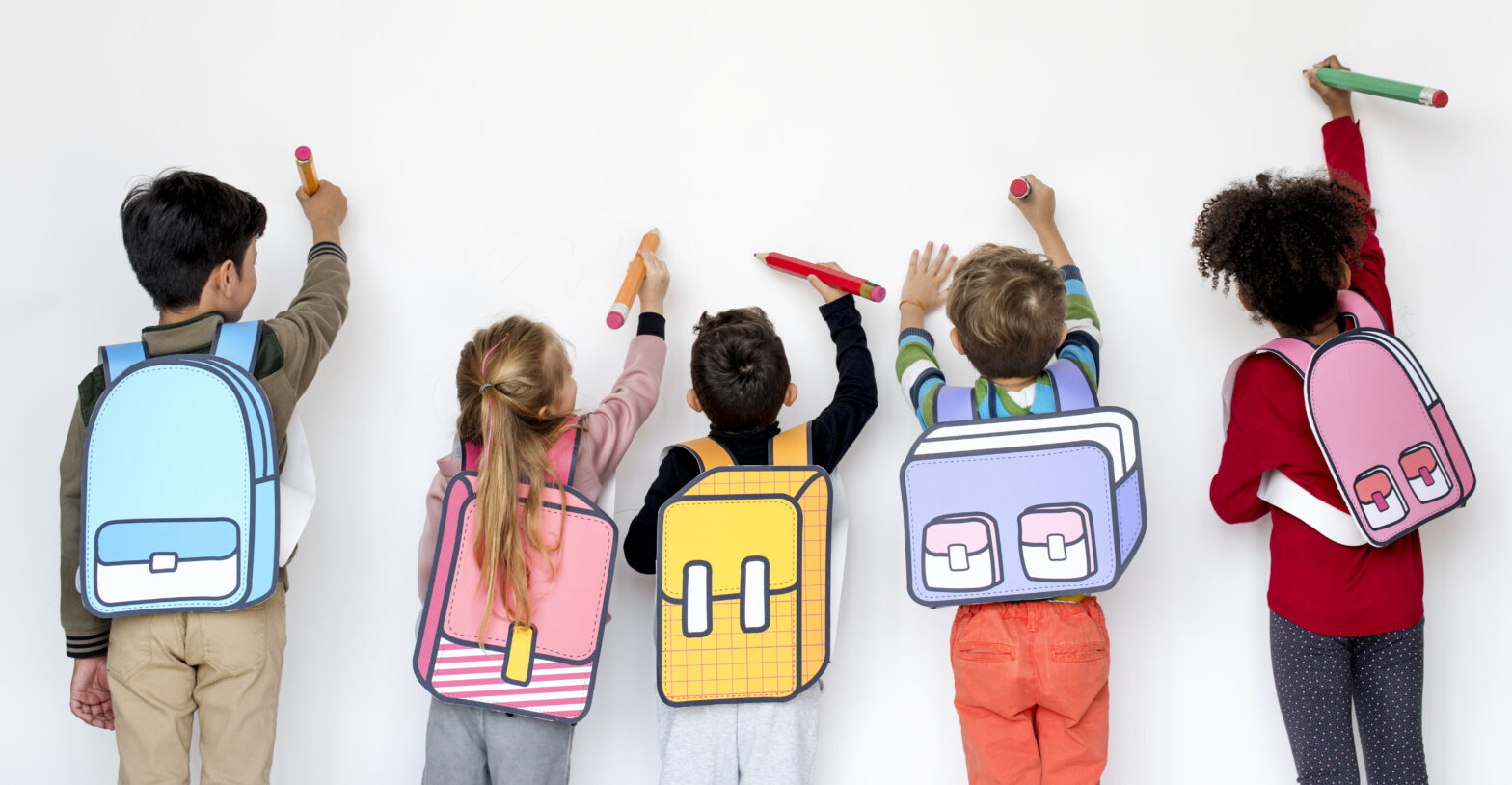While children throw their briefcases or backpacks in a corner after the last school bell rings and don’t want to hear about school until September, it is not so easy for their parents. They can expect a relatively large investment in new school supplies. The impact of TV on parents’ shopping behaviour after one school year and before the start of a new one was explored by LG Ad Solutions in its online survey, Commericals & Classrooms: TV’s Impact on Back-to-School Shopping. The study, published in June 2024, surveyed 778 U.S. connected television (CTV) users who are parents or guardians of at least one child under the age of 22 for whom they are purchasing school supplies.
According to the survey, television is watched daily by:
- 65% of parents with children in elementary school,
- 60% of parents with children in middle school,
- 65% of parents with children in high school,
- 74% of parents with children in college.
Before the school bell rings again
One school year is over, and parents are already starting to think about the next one. Television is a powerful medium and has a big influence on parents’ buying behaviour. Therefore, it is important for advertisers to know how they can effectively reach parents of schoolchildren. What are the findings of the LG Ad Solutions survey?
Time spent in front of the TV is dominated by streaming
Parents spend 59% of their time watching TV with their children. Of these, 90% of parents prefer streaming TV when co-viewing.
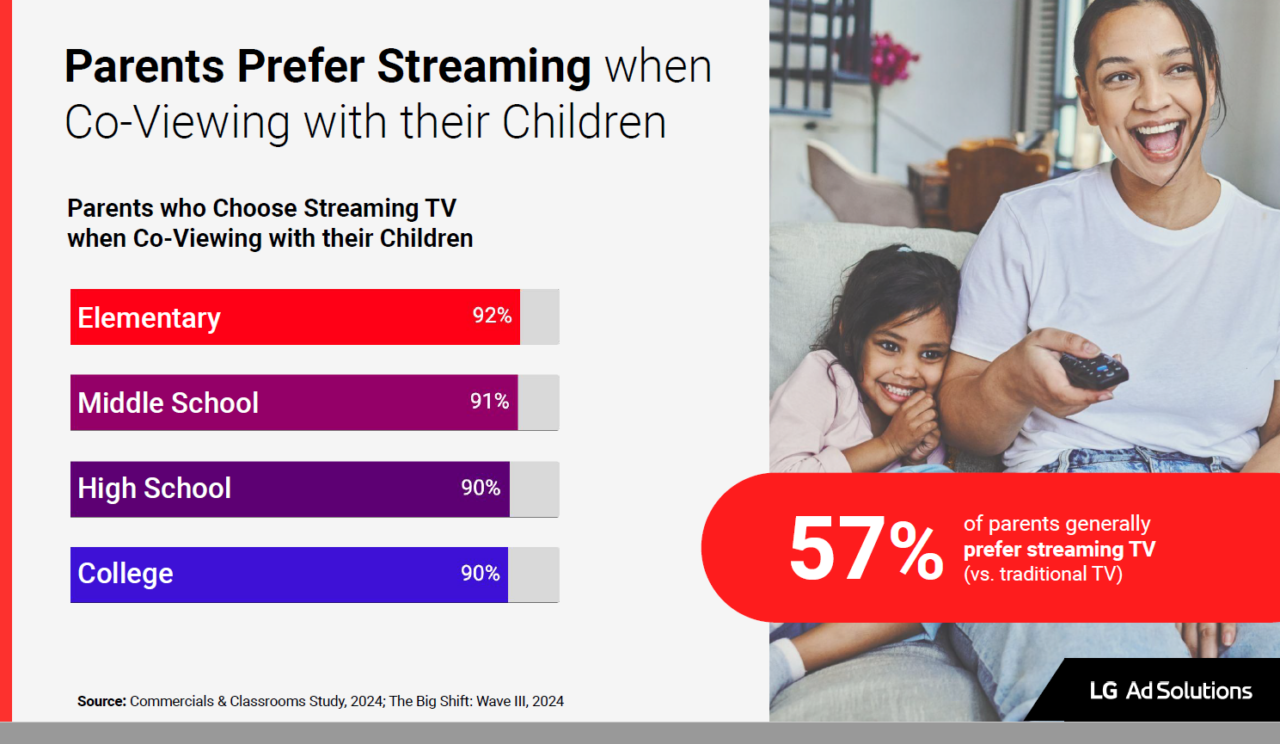
In addition, 77% of parents prefer ad-supported streaming TV apps that allow them to watch content for free.
First come, first served
As many as 30% of parents start shopping in May to get a head start and avoid stress about last-minute purchases. The bulk of parents then shop for school supplies during the holidays. By contrast, five per cent of parents leave shopping until September and October:
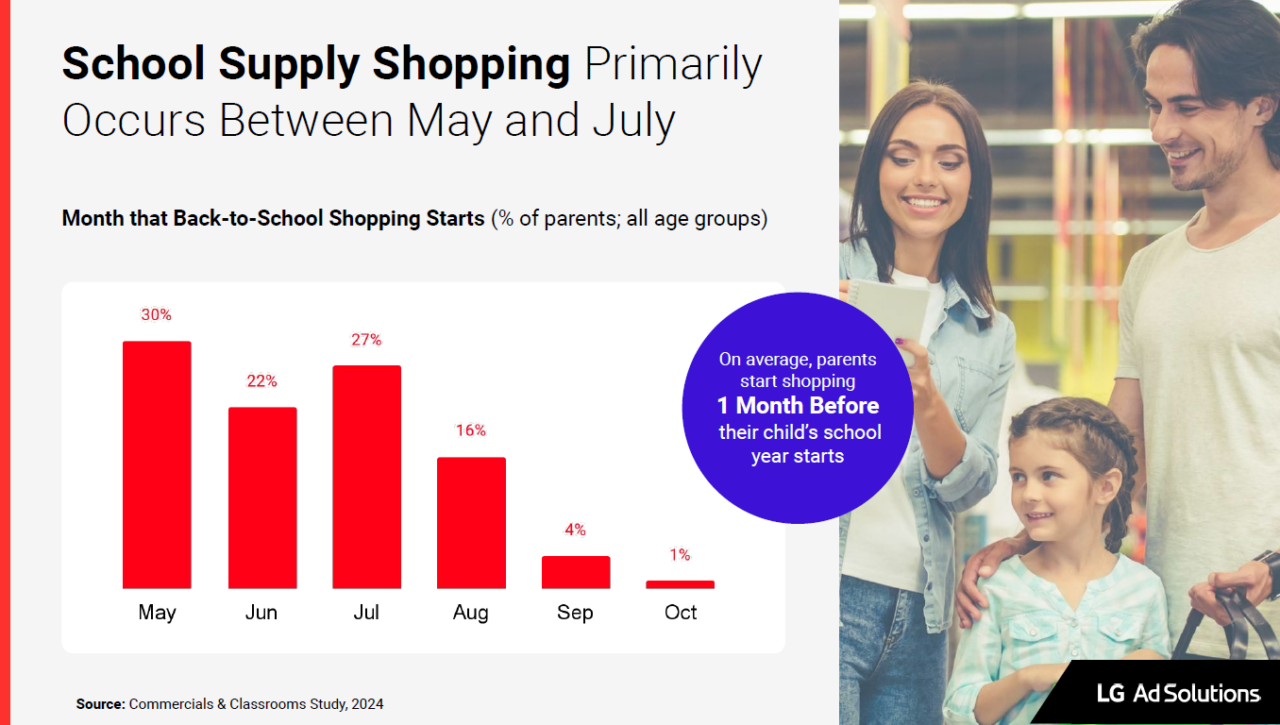
Something can be reused
Apart from stationery (70%), clothing (65%) is among the items parents usually buy again each year, which is not surprising as children grow up in the blink of an eye. Electronics (58%), sports gear, and bedroom/dorm supplies rank next. 89% of parents reuse school supplies from the previous year.
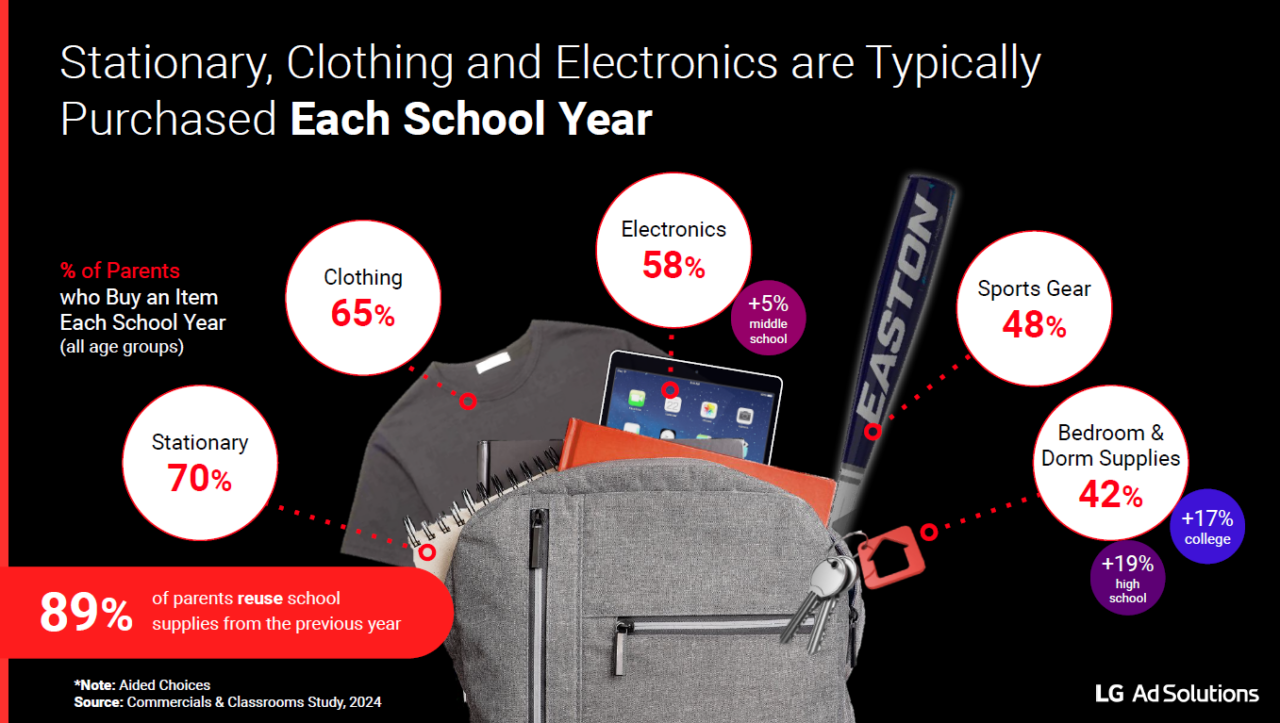
Online shopping for schoolchildren is growing
One in four parents prefers to purchase school supplies online. Among consumers’ top reasons for shopping online are a better shopping experience (43%), lower prices (37%) and a wider selection of products (36%). Conversely, in-store shopping is preferred by parents who value immediate availability of products (48%), discounts/sales events (41%) and a better in-store shopping experience (33%).
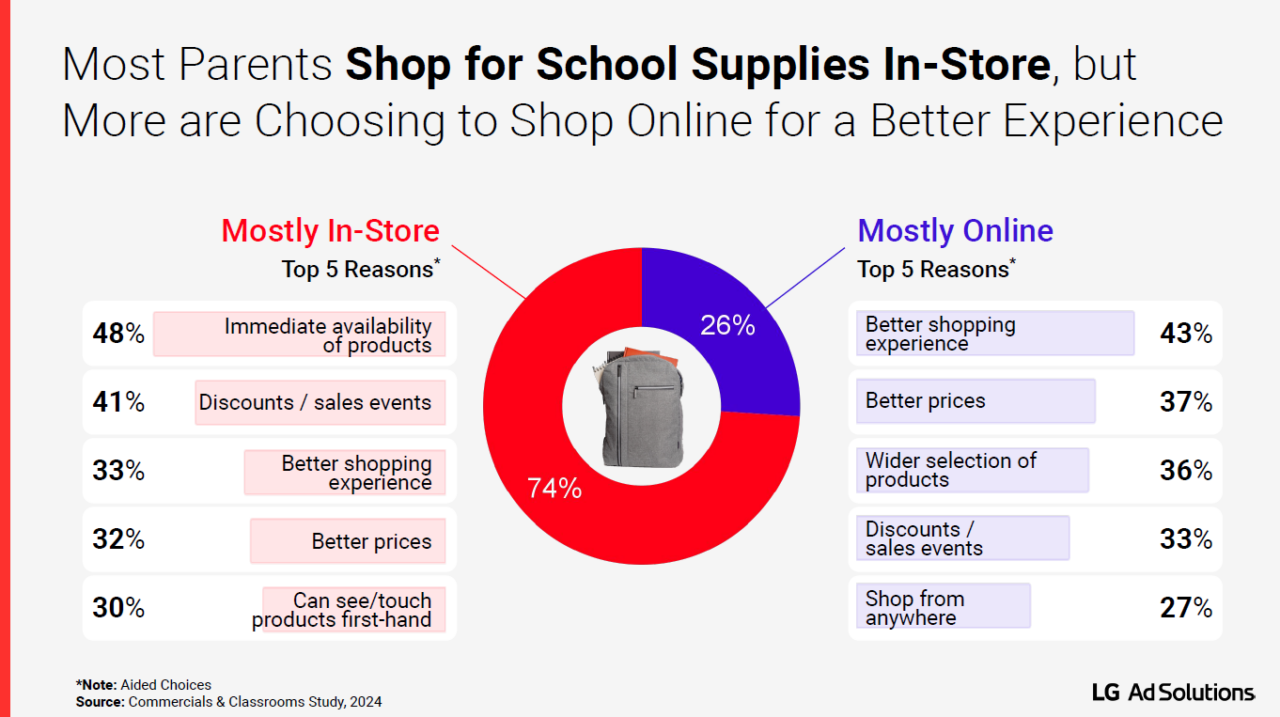
Large retail chains are among the most popular sources when it comes to purchasing school supplies. Advertisers’ campaigns are spread over time between two school years. While advertising for clothing and footwear peaks at the beginning of May, drops over the holidays and picks up again during September, personal electronics have an absolute peak in June, after which campaigns are below the other segments. Big box retail advertises massively in late May/early June, with another peak in late July/August.
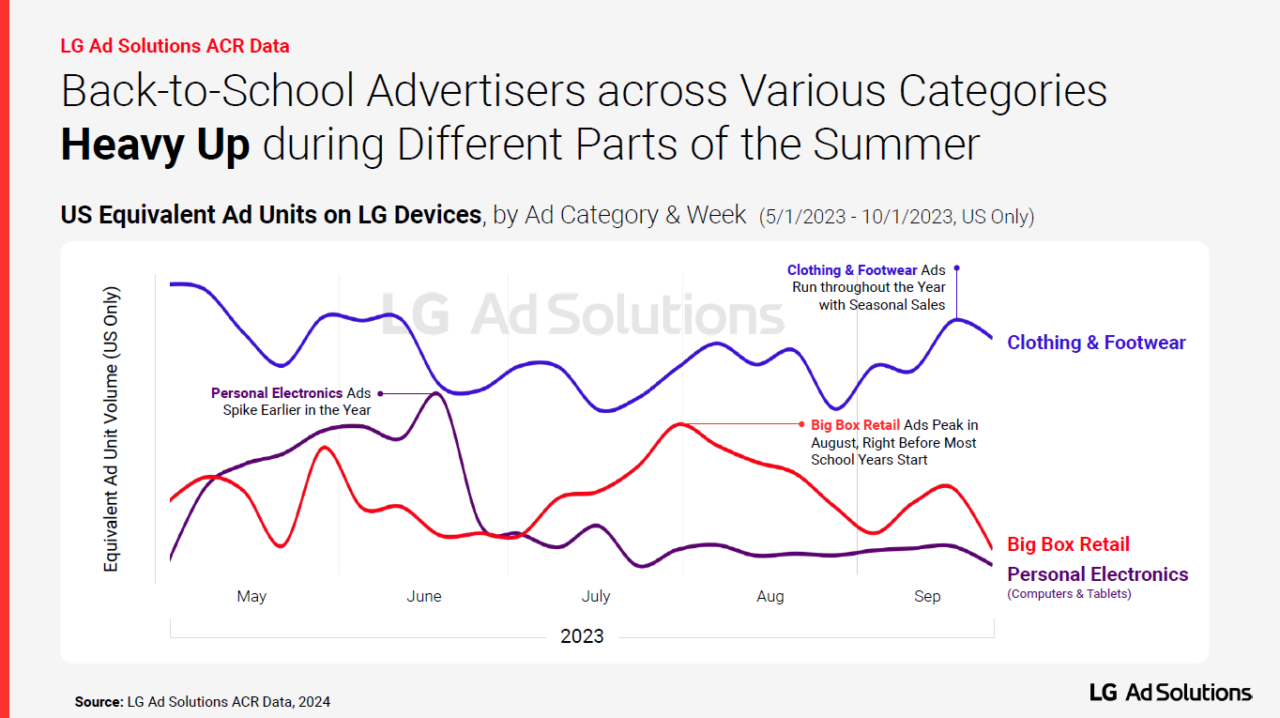
Children have a big influence on what to buy
Not only high-school and college students, but also elementary school children like to have a voice when their parents are purchasing school supplies and equipment. College students have the most influence in the decision-making process, with 93% of college students influencing what is purchased and 88% influencing where to shop. Middle school children, rather surprisingly, come second (91% and 88%, respectively). In general, all children have more influence over what is purchased than where to shop.
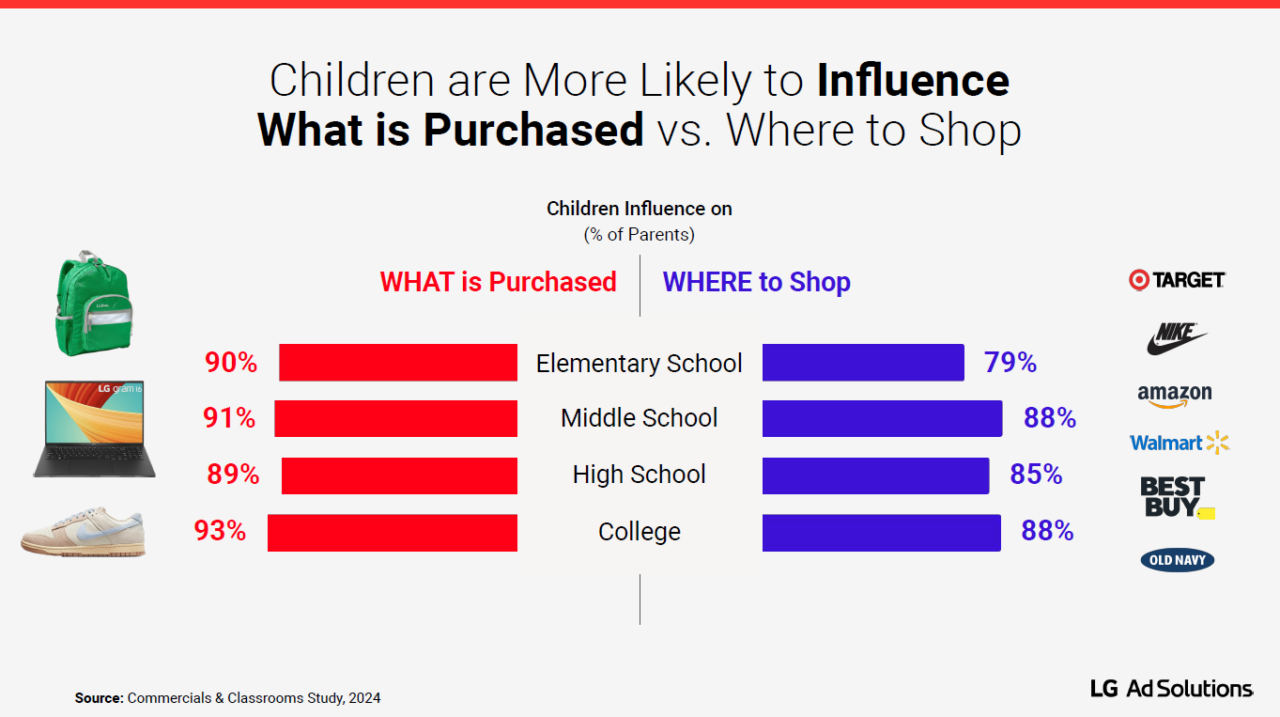
Shopping for school supplies is a burden for parents
When shopping for school supplies for elementary school children, the main issues cited by parents in the survey include the cost (41%), shopping at multiple stores (41%), and the time it takes them to shop.
Parents with children in middle school cited time spent (42%), children being picky (39%) and having to shop in multiple shops (39%) as the biggest problems.
Parents of students in secondary school face similar difficulties. The biggest problems are time spent (42%), the ability to get all the necessary supplies and equipment (38%), and the picky nature of their children (38%).
For college and university students, the need to go to multiple stores (38%), the time spent on finding school supplies (36%), and the picky nature of their almost-grown-up offspring (36%) are the top problems.
Television advertising works on parents
Television advertising helps parents significantly with their purchasing decisions. What appeals to them most in advertising, according to the survey?
- Product use: 89% of parents appreciate ads that show how products are used.
- Discounts and sales events: 93% of parents are interested in discounts and sales events to help them save money and help their family budget.
- Attractive effects: 86% of parents like ads with special video or sound effects.
- QR codes: 81% of parents welcome the opportunity to scan a QR code directly from a TV advert for school supplies.
The influence of television advertising on purchasing behaviour
Television campaigns aimed at parents of pupils and students influence both what products are bought and from which stores. When it comes to what will be purchased, advertising has the greatest influence on parents of college students (90%), followed by parents of middle school children (89%). The same pattern holds for where to shop. Parents of college and university students are again in first place (92%), followed by parents of middle school children (90%).
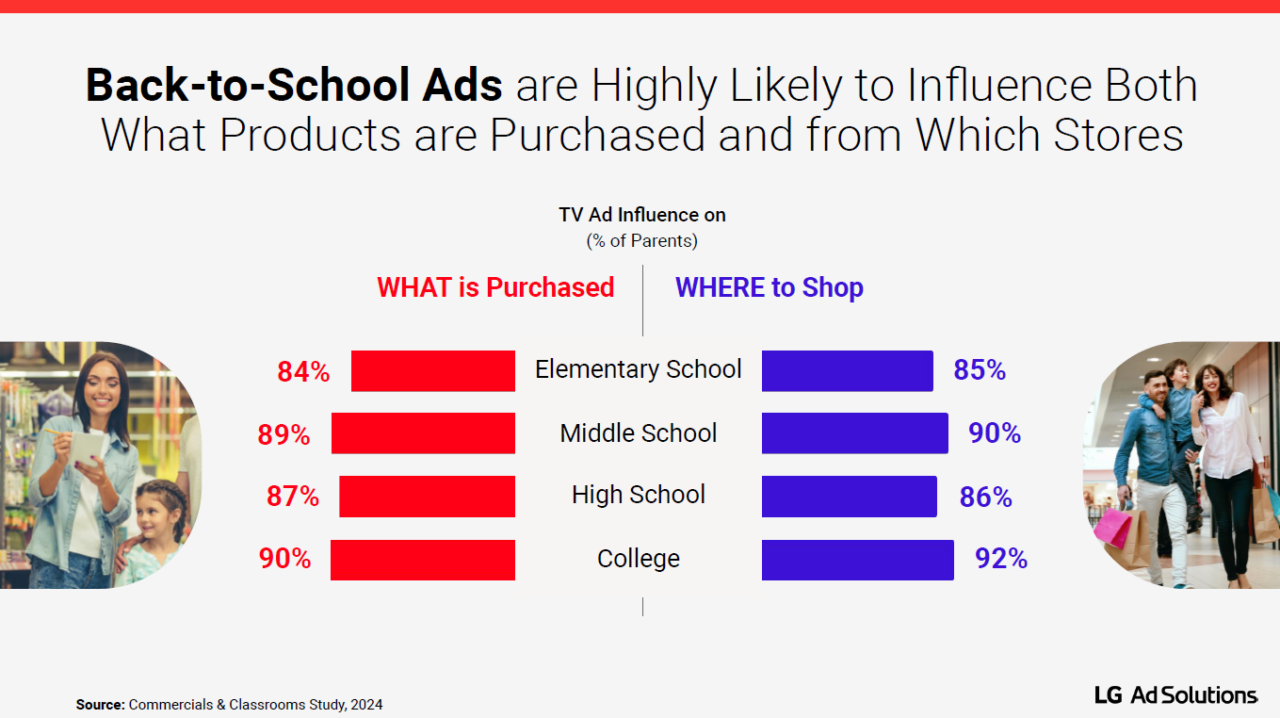
TV ads also have a tangible impact on traffic and sales volumes. According to the results of the survey, 87% of parents are able to recall back-to-school TV ads. 85% of parents have made a purchase at a specific store after seeing a TV ad, and likewise, 85% of parents have purchased certain school supplies after seeing a TV spot.
Key findings
The LG Ad Solutions online survey shows several facts:
- Parents spend a lot of time co-watching - usually streaming TV - with their children. The optimal way for advertisers to reach families is through ad-supported streaming.
- Most parents start shopping one to two months before the start of the school year, but 30% of parents start shopping in May. Brands should consider starting their campaigns earlier.
- An estimated $1,000 per child was spent by US parents on school supplies last year, and 62% expect to spend even more in 2024, a significant opportunity for advertisers.
- Although parents still frequently purchase school supplies and equipment in-store, the number of those choosing to shop online is steadily increasing. Advertising campaigns should therefore take both options into account.
- Children have more influence on what specific products are purchased than on where to shop. Therefore, brands should take this into account when targeting families.
- Most parents recall seeing back-to-school TV ads. Last year, 85% of them made a purchase after seeing the advert - clear evidence of the potential of targeted TV campaigns.
Source: tvrev.com

